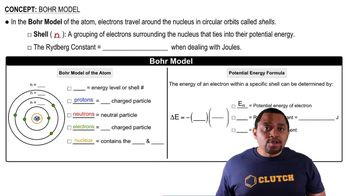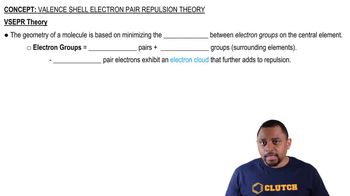Consider the molecular orbitals of the P2 molecule. Assume that the MOs of diatomics from the third row of the periodic table are analogous to those from the second row. (c) For the P2 molecule, how many electrons occupy the MO in the figure?
(b) When applying the VSEPR model, we count a double or triple bond as a single electron domain. Why is this justified?
 Verified step by step guidance
Verified step by step guidanceKey Concepts
VSEPR Model

Electron Domains

Bonding and Repulsion

The iodine bromide molecule, IBr, is an interhalogen compound. Assume that the molecular orbitals of IBr are analogous to the homonuclear diatomic molecule F2. (a) Which valence atomic orbitals of I and of Br are used to construct the MOs of IBr?
The iodine bromide molecule, IBr, is an interhalogen compound. Assume that the molecular orbitals of IBr are analogous to the homonuclear diatomic molecule F2. (c) One of the valence MOs of IBr is sketched here. Why are the atomic orbital contributions to this MO different in size?
An AB2 molecule is described as having a tetrahedral geometry. (a) How many nonbonding domains are on atom A?
An AB2 molecule is described as having a tetrahedral geometry. (b) Based on the information given, which of the following is the molecular geometry of the molecule: (i) linear, (ii) bent, (iii) trigonal planar, or (iv) tetrahedral?
Consider the following XF4 ions: PF4-, BrF4-, ClF4+, and AlF4-. (a) Which of the ions have more than an octet of electrons around the central atom?
